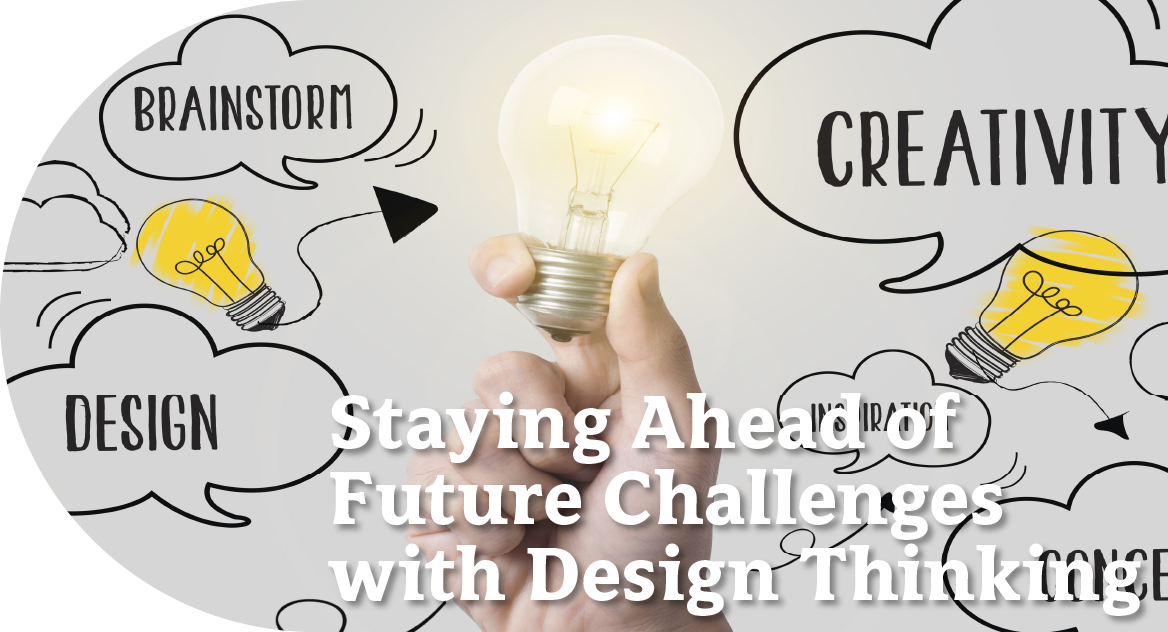DMatters March 2020 Issue

Over the last decade, design thinking has come to the forefront of society in tackling complex and thorny problems with innovative and effective solutions. Chances are you have already heard about it but wonder how it can help you and your organisation up the game. Institute of Design Knowledge (IDK), the knowledge arm of Hong Kong Design Centre (HKDC), has since 2012 been sowing the seeds of enterprising creativity through design thinking-led programming. It substantiates HKDC’s growing significance in influencing wider and strategic embrace of the citizen-, people- and user-centred approach towards problem solving and value creation. It is about value propositions and solutions based on people’s aspirations, wellbeing and needs, supported by a forward-thinking governance support system and business models.
For beginners, every experience of applying design thinking to a real-life problem is valuable knowledge for subsequent endeavours. IDK’s case studies aim to give you insight into how you can apply design thinking in your work. Let’s have a sneak peek at some of the cases!
The first is an invigorating example of tri-sector collaboration. Amy Chan, Chairman of the Child Development Initiative Alliance, embraces design thinking in grappling with generational poverty. She led her team to revamp their model from simply a government-funded money-saving scheme to a work experience programme, then to a holistic employability enhancement programme engaging the private and public sectors. Using design thinking, they re-defined their goal from teaching teens how to save money to how to equip them with the right skills and attitude employers seek. They perked up the work experience scheme by providing training to not just the youngsters but also the participating companies which learned how to work with Gen Z and customise valuable work experience for them. Their model is a win-win, as the young participants achieved a higher completion rate and the employers showed a much-improved satisfaction rate.

|

|
Amy Chan embraces design thinking, leading her team to revamp their model from simply a government-funded money-saving scheme to a work experience programme, then to a holistic employability enhancement programme engaging the private and public sectors.
Another case demonstrates the power of design thinking in innovating education. It is the experience of biology teacher Wong Pui-pui from Tung Wah Group of Hospitals Wong Fung Ling College in designing an innovative programme for her school. Having learnt design thinking from the InnoPower@JC: Fellowship for Teachers programme, she started with interviewing the users, her students. In addition to getting good grades, they wanted to acquire soft skills like communications, problem-solving and self-confidence. Miss Wong’s first prototype, which tried to make extra-curricular activities more accessible, did not pan out. She redeveloped the idea into the learning-by-doing “MAKER+” course which has now run for 3 years. The course trains her students to think “designerly” by identifying problems on campus and getting to the heart of users’ needs. Her students showed exceptional commitment to perfecting their projects, pitching their ideas confidently and learning from failure.

|

|
Wong Pui-pui designed an innovative programme for her school, training her students to think “designerly” by identifying problems on campus and getting to the heart of users’ needs.
Amy’s and Miss Wong’s journeys illustrate that innovation is often not a straight road. Design thinking guides you to explore new possibilities, learn from mistakes and come back stronger. IDK’s training programmes help all sorts of organisations, from corporates and non-profits to educators, make design thinking a handy tool for their daily work-life challenges. Hosted in collaboration with leading design-thinking experts, IDK’s workshops are tailored to the specific needs of the participants and their industries. So far, more than 700 design professionals and business executives have been benefited and more than 170 teachers are empowered.
Design thinking is constantly evolving. IDK cherrypicks design thinking cases (like Amy’s and Miss Wong’s) and stories from passionate professionals across different sectors, and turns them into thought-provoking articles and social media feeds. Follow IDK on Facebook and Instagram, or HKDC Facebook page to get your regular doses of inspirations! If you are eager to try it out, IDK is developing a design thinking toolkit that can guide you through it step by step. Please stay tuned!

|

|
IDK Facebook and Instagram provide regular doses of design thinking knowledge and inspirations.
In this issue, we will get to know 2 new DIP designers who have very different career paths but are equally talented. We will also take a look back at the Unleash! Forum for Educators fruitfully held last December, with testimonials on how design thinking can transform students’ learning experience.
Last but not least, let’s take a look at 2 new BODW CityProg placemaking programmes which will kindle our imagination about Wan Chai and Sham Shui Po – our tactical programmes to engage the public with design and activate public spaces and cultural tourism through creative placemaking.
Click here to read the full issue of DMatters March 2020.
Further readings
“What is the framework for innovation? Design Council’s evolved Double Diamond” by Design Council (UK)
https://www.designcouncil.org.uk/news-opinion/what-framework-innovation-design-councils-evolved-double-diamond
“The power of design thinking” McKinsey Podcast
https://www.mckinsey.com/business-functions/mckinsey-digital/our-insights/the-power-of-design-thinking
“Why design thinking works” by Jeanne Liedtka, Harvard Business Review
https://hbr.org/2018/09/why-design-thinking-works